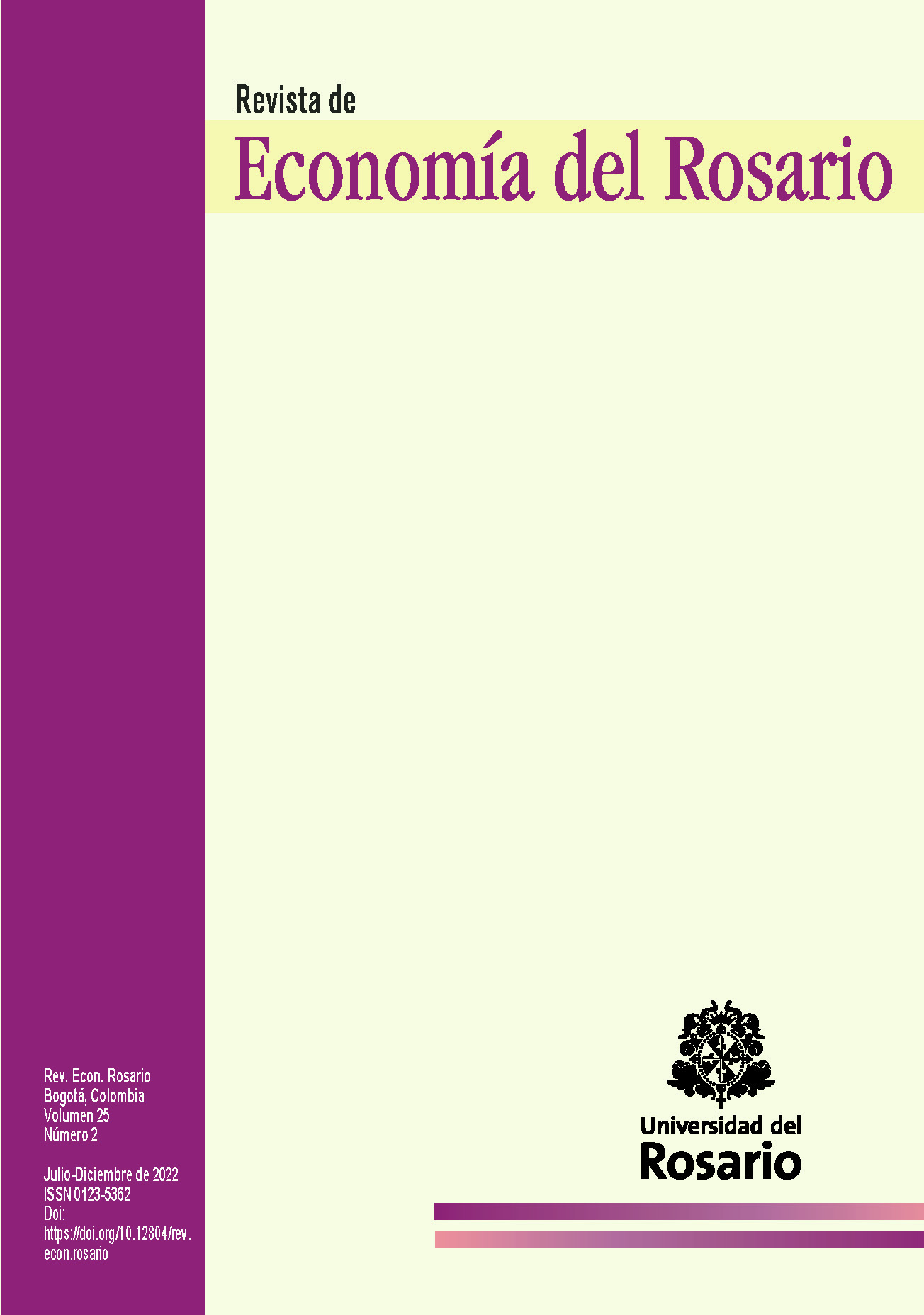Revista de Economia del Rosario
Número:
2
Publicado:
Clasificación JEL:
C45

Lo más reciente
Oscar Botero-Ramírez, Andrés Murcia, Hernando Vargas-Herrera
Juliana Jaramillo-Echeverri, Adriana Sofía Rodríguez
Gaurav Khanna, Carlos Alberto Medina-Durango, Anant Nyshadham, Daniel Ramos-Menchelli, Jorge Andrés Tamayo-Castaño, Audrey Tiew
The objective of this article is to study the evolution of Colombian liberalization and integration into world trade from 1996 to 2018. We achieved our objective by measuring Colombia’s importance in the world trade network through the employment of several types of network centrality metrics and the examinatio n of their dynamics against a set of regional peers. We were able to conclude that Colombia’s centrality in the world trade network did not improve, whereas that of some of her regional peers did manifestly. Results highlighted the perils of analyzing a country’s trade dynamics in isolation and emphasized the usefulness of examining the world trade network.



